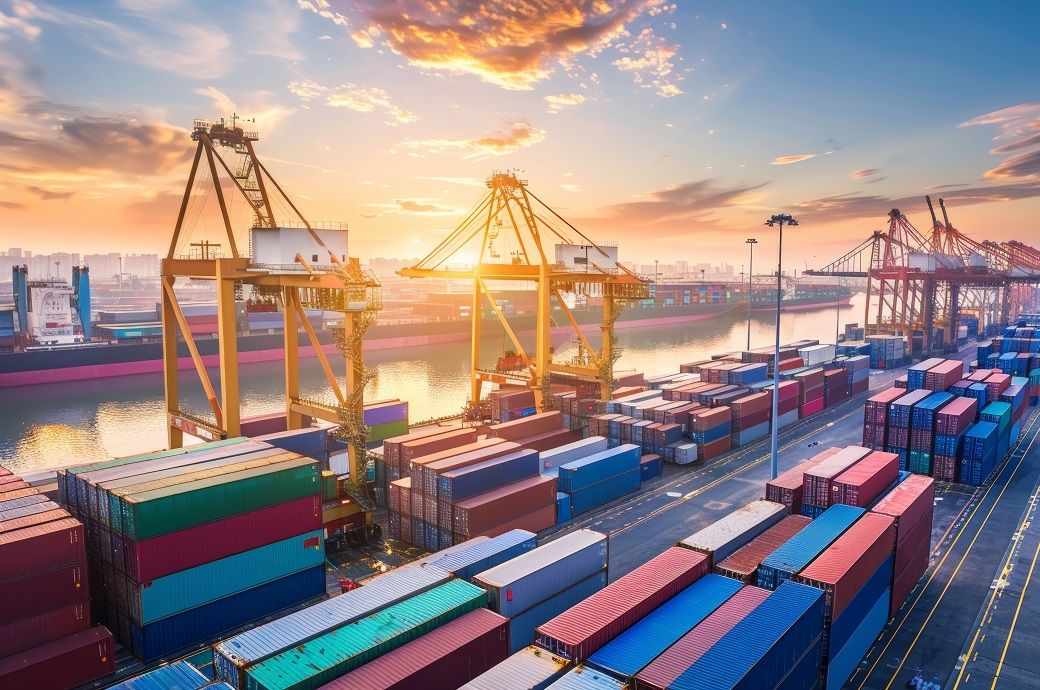

Indian exporters are facing potential disruptions in their business operations, EBITDA margins, and working capital due to a recent surge in container freight rates, which have increased fourfold year-on-year, according to credit rating agency India Ratings and Research (Ind-Ra). The agency cautions that if this surge persists, it could significantly affect the exporters throughout fiscal 2025 (FY25).
Freight rates had seen significant corrections through 2023 and the first nine months of 2024, following a post-COVID surge in 2022 due to supply chain bottlenecks. However, the reduction in freight and forwarding costs for Indian companies was less pronounced compared to international costs and is expected to rise again in FY25. Additionally, the working capital cycle, which had peaked during the pandemic before returning to normal levels, is now showing signs of lengthening in FY25, as per Ind-Ra.
This surge in freight rates could be temporary, influenced by the advance of Chinese exports ahead of impending US duty protections effective from 1 October 2024, and the re-stocking of products for Christmas. However, it highlights broader issues such as container shortages due to longer shipping routes avoiding the Red Sea channel. On the other hand, the Baltic Exchange Dry Index has doubled since July 2023 but remains below the high seen in December 2023, indicating that bulk container freight costs are likely to remain stable.
Ind-Ra believes the increased freight rates will result in higher working capital financing requirements. The agency analysed 102 listed companies with at least 25 per cent of their revenues and/or raw materials sourced from foreign trade over the period FY19-FY24. In its previous analysis of the Red Sea disruption, Ind-Ra highlighted the impact on working capital cycles and freight and forwarding costs for companies, which are likely to worsen if the disruption continues.
Factors contributing to the rising freight rates include increased fuel usage and higher insurance risk premiums, leading to higher transportation costs. The increased travel time and expanded trade routes are causing congestion at major ports, further increasing ship turnaround times and costs.
The revival of merchandise exports from Asian countries, which grew substantially in the first five months of 2024, has also contributed to higher freight costs. The increase in exports from China can be attributed to concerns over impending import duties and uncertainties surrounding new trade policies following the US election results. However, this strong momentum could be temporary, with export growth potentially flattening as more clarity emerges.
The disruption of sea routes, particularly through the Suez Canal, which has seen a 70 per cent decline in usage due to attacks on shipping vessels since mid-November 2023, has exacerbated the situation. The Freight Container Index has increased fourfold since July 2023, although the current scenario is not as severe as during the COVID-19 pandemic. Exporters are likely to struggle to pass on the recent rise in shipping costs to end-consumers due to weak global demand, providing resilience to inflation. There are no significant signs of a resolution to the ongoing disruption in the near future.
The Atlantic-Pacific trade exchange has also been affected by restricted ship movement through the Panama Canal, caused by a long-term El Nino dry season. This has led to a 24 per cent drop in the volume of merchandise traded through the canal compared to 2023, with the normalcy of operations dependent on climate change.
Fibre2Fashion News Desk (DP)